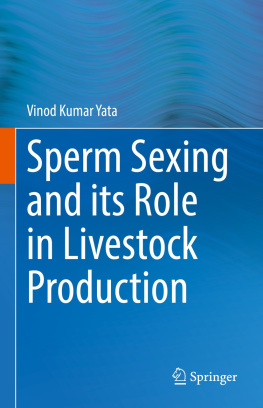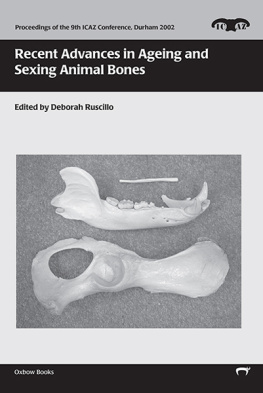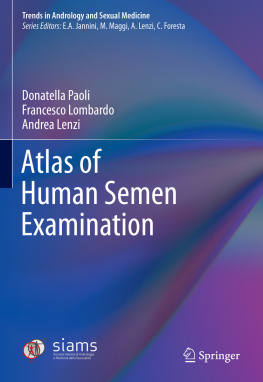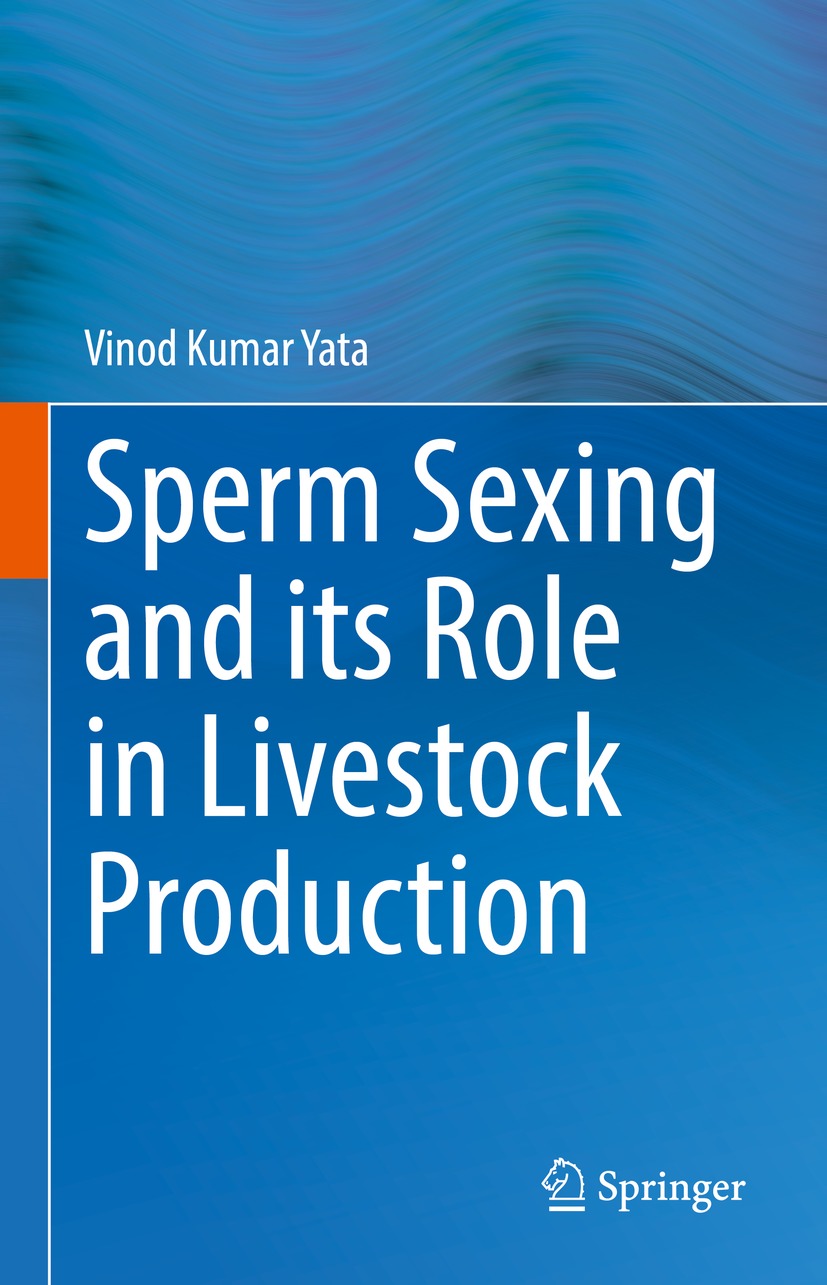Vinod Kumar Yata
Sperm Sexing and its Role in Livestock Production

Logo of the publisher
Vinod Kumar Yata
Animal Biotechnology Centre, National Dairy Research Institute (NDRI), Karnal, Haryana, India
ISBN 978-981-19-1789-9 e-ISBN 978-981-19-1790-5
https://doi.org/10.1007/978-981-19-1790-5
The Editor(s) (if applicable) and The Author(s), under exclusive license to Springer Nature Singapore Pte Ltd. 2022
This work is subject to copyright. All rights are solely and exclusively licensed by the Publisher, whether the whole or part of the material is concerned, specifically the rights of translation, reprinting, reuse of illustrations, recitation, broadcasting, reproduction on microfilms or in any other physical way, and transmission or information storage and retrieval, electronic adaptation, computer software, or by similar or dissimilar methodology now known or hereafter developed.
The use of general descriptive names, registered names, trademarks, service marks, etc. in this publication does not imply, even in the absence of a specific statement, that such names are exempt from the relevant protective laws and regulations and therefore free for general use.
The publisher, the authors and the editors are safe to assume that the advice and information in this book are believed to be true and accurate at the date of publication. Neither the publisher nor the authors or the editors give a warranty, expressed or implied, with respect to the material contained herein or for any errors or omissions that may have been made. The publisher remains neutral with regard to jurisdictional claims in published maps and institutional affiliations.
This Springer imprint is published by the registered company Springer Nature Singapore Pte Ltd.
The registered company address is: 152 Beach Road, #21-01/04 Gateway East, Singapore 189721, Singapore
Foreword
The book, Sperm Sexing and its Role in Livestock Production authored by Dr Vinod Kumar Yata, covers the principles, methods, economic and ethical issues of the sperm sexing. The field of sperm sexing is of great interest to the livestock industry, and the number of groups involved in the commercialization of sexed sperm is increasing gradually. Although the book chapters cover a different aspect of sperm sexing, I want to highlight two of them. The first refers to the characterization of animal spermatozoa which provides the clues to the interdisciplinary researchers to develop novel methods of spermatozoa. The second relates to the immunological methods of sperm sexing which highlights the identification of sex-specific markers on the surface of animal spermatozoa. Apart from this, the book discussed other issues having significant importance in the sperm sexing, for example, FACS-based sperm sexing and latest developments of sperm sexing, among others.
In summary, there is no doubt about the interest of the contents displayed in this book. I am sure that this book will provide the scientific community and animal industry with great benefits for the coming years.
Joanna Maria Gonalves de Souza Fabjan
Preface
In recent years, sperm sexing has made an impressive progress as one of the important animal reproduction technologies for livestock production. The successful commercial exploitation of sexed semen requires knowledge on the principles, applications, ethical and economic issues of sperm sexing. A major purpose of the book is to depict the basic and critical aspects of sperm sexing which may be used directly to increase the production of livestock. This book will act as an important means of information to various interdisciplinary researchers working on sperm research.
The book focuses on describing the conventional and state-of-the-art methods of sperm sexing. Characterization of the animal spermatozoa is one of the major areas for the development of novel methods of sperm sexing, and this book provides an enhanced description of this research area. A separate chapter is devoted to discussing the commercially available sperm sexing based on fluorescent-activated cell sorting. The possibility of sperm sexing by immunological methods discussed in this book to an expanded level. Recent advances in sperm sexing methods, based on microfluidics, nanoparticles, and genetic engineering, were discussed in this book. This book provides insight into the various cryopreservation methods of semen which is very crucial for the storage and transport of sexed semen. Ethical issues raised by animal welfare societies and the common public are discussed in this book. Patent issues and commercial aspects of sperm sexing are also discussed in this book.
The book briefs the readers on various novel and innovative ideas of emerging sperm sexing methods. This comprehensive book will be of great value to the livestock industry, veterinarians, researchers as well as the food industry.
Vinod Kumar Yata
Karnal, Haryana, India
Acknowledgments
It is my immense pleasure to express my respectful deep sense of heartfelt gratitude to Dr A K Mohanty, Joint Director, ICAR-Indian Veterinary Research Institute, India, for his valuable suggestions, and for his wishes in my endeavor that has helped me to successfully complete this book. I would like to thank Dr Sudarshan Kumar, ICAR-National Dairy Research Institute (NDRI), Karnal, India, who helped me with valuable discussions. I am also thankful to the people at Animal Biotechnology Centre, NDRI, Karnal, India for their kind cooperation.
I would like to thank the Department of Biotechnology, Government of India, for providing financial support from DBT-RA Program in Biotechnology & Life Sciences. My sincere thanks to Dr M S Chauhan, Director, ICAR-National Dairy Research Institute (NDRI), Karnal, India institutional support for this endeavor.
I would like to extend my thanks to Dr Bhavik Sawhney, Editor-Biomedicine, Springer Nature and production team, Springer Nature, for their generous assistance, constant support, and patience in initializing and publishing this book. I would like to acknowledge Dr Dharmendra Gangwar for his critical reading of this book and subsequent valuable suggestions. I also thank Mr Faiz Akram and Mr G Vinay Bhaskar for their assistance while developing this book.
Finally, I would like to express my sincere gratitude to my father, Mr Sathyanarayana, my beloved wife, Dr Smitha and my son, Rudransh, for their endless support.
Contents
About the Author
Vinod Kumar Yata
is an interdisciplinary researcher working at the National Dairy Research Institute, Karnal, India. Previously, he worked as an Assistant Professor at the Department of Biotechnology, Dr B R Ambedkar National Institute of Technology Jalandhar, Punjab, India. He received his PhD in Biotechnology from the Indian Institute of Technology Guwahati. He specializes in interdisciplinary research which includes Nanotechnology, Microfluidics, Animal Biotechnology, Cancer biology, and Bioinformatics. He has developed a microfluidic device for the separation of live and motile spermatozoa from cattle semen samples. His research interests have been focused on the development of nanocarriers, understanding prodrug enzyme therapy, and targeted drug delivery. He elucidated the structural features and binding interactions of several biomolecules by









